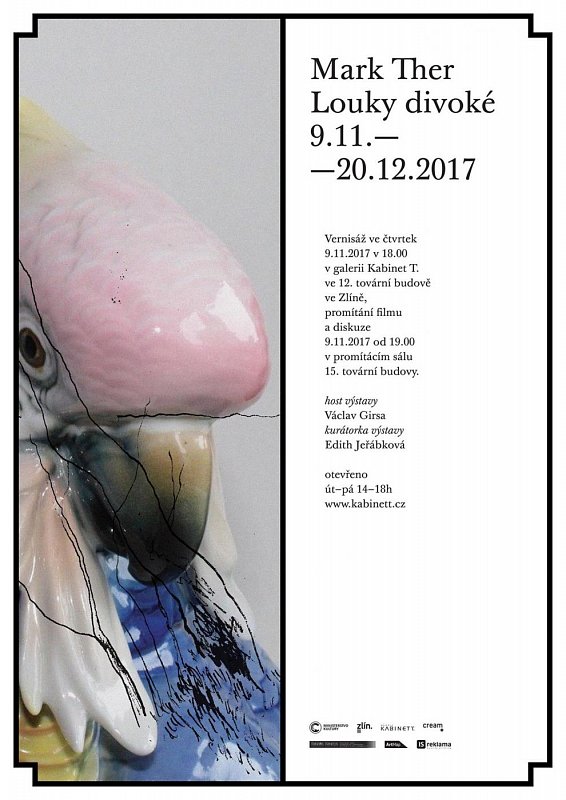The exhibition Wild Meadows represents the artist's second area of artistic interest. Alongside film and video, these are drawings of landscapes that seem carefree and idyllic. The installation of white curtains and fabric wallpaper amplifies the aristocratic feel of the painting into a more tense and dramatic situation of a social event of uncertain destination. The installation also highlights issues of local culture as it transposes romantic historicism to Bata's modern city. However, the existence of local culture tied to ethnicity and nation is also a major issue of our times, linked to migration waves, global culture and the online environment. Both Ther's insistence and seriousness in returning to the recent past, where the causes of today's social and political conditions lie, and the image of Václav Girsa point in this direction. Girsa does not work with nostalgia as Ther does, but captures a landscape that is more contemporary. Why Mark Ther repeatedly invites Václav Girsa to his exhibitions and asks him to portray a certain subject remains rather a mystery. Ther's drawings in this exhibition are based on the artist's previous drawing series Heimatkreis Braunau Sudetenland, in which Mark Ther "reconstructed" the drawings of his distant uncle Franz Schmelz from the 1930s. This partial reconstruction is necessary where the continuity of development has been broken and there is nothing to build on smoothly. Mark Ther revives the individual "place" drawings of his uncle and turns them into future film fields, animated sceneries of the past of the Sudeten ethnic group.
Mark Ther studied at the Academy of Fine Arts in Prague under Vladimír Skrepl and Jiří Kovanda and then under Michael Bielicky and in New York at The Cooper Union for the Advancement of Science and Art. In 2011, he received the Jindřich Chalupecký Award (CJCH). His main area of work is in video, film and cinema presentation. He is committed to the aesthetic quality of image and sound that enhances the viewer's experience. His video films are characterized by sensual interpretations of traumatic themes and socio-historical taboos related to sexual deviance, porn aesthetics, gender and queer eroticism and Sudeten German issues. The early short videos exploited the clip mood and ambivalently played with popular culture and its icons (Madonna, Andy Warhol). An important figure whose identity he borrowed was the opera diva Maria Callas. Later, he favoured shots lingering in the gaze of obscene "agencies". In Das wandernde Sterlein, for which he won the CJCH, he linked the controversial subject of paedophilia with the story of the disappearance of children in the Czech borderlands during the last years of the war. In this way, he connected a silenced history with a current social debate. Ther works with precision of form, distinct aesthetics, sophisticated narrative, long takes, repetition and seductiveness of style. He consciously uses the moment of reversal to build up the real plot into a "mystery", while in his earlier videos, he applied provocation, distinctly arranged and explicit scenes for various so-called deviant and sexual deviations, which he portrayed with intricate detail and adherence. More recently, he has boldly linked these explored areas to the veiled issue of Czech and Sudeten German identity.








